“Happiness is when what you think, what you say, and what you do are in harmony.”
– Mahatma Gandhi
China Journey
On my first trip to the People’s Republic of China, 🇨🇳, as a delegate in the 2018 Chinese – American Principal Delegation, I was nervous, excited, proud and open minded. I was nervous about o leaving my family for an extended period of time, and I was excited to learn about an ancient and respected culture, and I was open minded as I was about to represent my school district with the hope of bringing Mandarin language and Chinese culture into the North Shore School District 112 curriculum & instructional programming.
represent my school district with the hope of bringing Mandarin language and Chinese culture into the North Shore School District 112 curriculum & instructional programming.
In this blog post, I’ll share some background, purpose, images, and perspective from this amazing professional learning mission.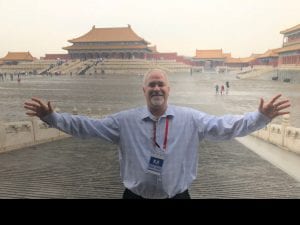
Over the years, I have visited Mexico, Germany, Australia, the Dominican Republic, Puerto Rico, Bermuda, and other foreign nations as part of educational and cultural exchange, exploration and leadership development.
Each trip and set of experiences makes me a better leader who can view the world and its beauty and challenges through lenses beyond those I normally see the world through. In addition, my service to the leaders who work for and with me as well as to the community as a whole become enhanced and improved by these global experiences.
With respect to this trip, the flight to China from Chicago was a non-stop plane ride from Chicago’s O’Hare International Airport to Beijing, China. We literally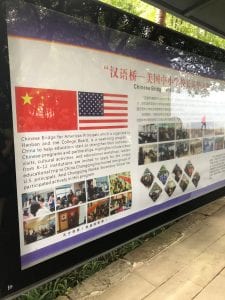 flew around the world in about 14 hours. I was traveling with a group from the College Board. There were educational leaders, board members, teachers, and others in the groups traveling on this K12China Bridge Delegation. In conjunction with the Confucius Institute (Hanban), leaders like me visit China’s schools, cultural sites, and business & economic zones on a mission of public diplomacy and educational exchange.
flew around the world in about 14 hours. I was traveling with a group from the College Board. There were educational leaders, board members, teachers, and others in the groups traveling on this K12China Bridge Delegation. In conjunction with the Confucius Institute (Hanban), leaders like me visit China’s schools, cultural sites, and business & economic zones on a mission of public diplomacy and educational exchange.
All in all, our delegation had about 150 educational leaders from all over the United States. Once in China, after initial meetings and orientation in Beijing, we were organized into 6 groups to visit 6 provinces around China. Our hosts in Beijing and in the provinces our groups visited rolled out the red carpet in terms of warmth, welcome, pride, and intensity.
The intensity that the Chinese support education is impressive. Teachers are highly honored professionals in the nation and in the culture overall. The schools I visited took such great pride in their founders, former principals, and teachers, made an impact on how we present our schools in the US. For example, it was normal and typical to have extensive physical space allocated for teacher offices and collaboration, school history museum areas, and student art galleries.
Teachers are highly honored professionals in the nation and in the culture overall. The schools I visited took such great pride in their founders, former principals, and teachers, made an impact on how we present our schools in the US. For example, it was normal and typical to have extensive physical space allocated for teacher offices and collaboration, school history museum areas, and student art galleries.
In addition to the many school visits and the educational forums with colleagues in China, we had opportunities to visit, explore, engage, and learn at some of the most famous and important cultural sites in the world. These included parts of the Great Wall of China as well as the Forbidden City, Tiananmen Square, as well as additional sites in the provinces. From the sights, sounds, overall experience of traveling abroad and feeling like a newcomer to our country must feel, it was exciting, overwhelming, stressful, and rewarding at the same time. We were engaged from early in the morning to late in the night every day we were on the delegation. We visited elementary schools, high schools, and we also spent a full day of observations, interactions and seminar work at Beijing Language and Culture University. We really got to glimpse and experience the full range of Chinese educational programming.
early in the morning to late in the night every day we were on the delegation. We visited elementary schools, high schools, and we also spent a full day of observations, interactions and seminar work at Beijing Language and Culture University. We really got to glimpse and experience the full range of Chinese educational programming.
The American educators in the large group as well as the smaller groups shared common bonds of education leadership vision. Whether we carried the professional title of superintendent, director, principal, assistant principal, etc. we all shared the common bonds of care for the future of our nation through education. We all shared the common bonds of passion for leadership through open minded and open hearted global exchange and learning. We all shared the common bonds of becoming travelers instead of tourists. We were traveling to China to meet with and form and sustain people to people relationships on behalf of a larger global purpose beyond our individual and local objectives.
tourists. We were traveling to China to meet with and form and sustain people to people relationships on behalf of a larger global purpose beyond our individual and local objectives.
There are incredible opportunities to embrace globalism and global partnership in support of diplomacy, education, economics, and the overall future through education explorations and missions like this one.
The sights and sounds of China gripped us and impacted us from the moment we landed in Beijing’s airport. The historic Chinese language of characters was all around us as was the bilingual nature of English transliteration as well as English audio and visual translation. The world is bilingual and trilingual, and in many parts of the  world, multi-lingual (beyond 3 languages). As Americans, we sometimes fall into a complacent state since “everyone learns English” — but language is far more than the ability to get from point a to point b. Language is the windows into one’s culture — it’s a personal connector; through partnerships and learning we can join various cultures together.
world, multi-lingual (beyond 3 languages). As Americans, we sometimes fall into a complacent state since “everyone learns English” — but language is far more than the ability to get from point a to point b. Language is the windows into one’s culture — it’s a personal connector; through partnerships and learning we can join various cultures together.
As part of the 2018 Chinese-American Principal Delegation, we were met by enthusiastic and able tour guides and representatives of Hanban, & the College Board. We American delegates were eager to dive in and get started on this amazing, life-changing set of adventures. International travel is challenging in and of itself with time, distance and time changes, it’s also a challenge when you are entering a culture different from your own with unknown opportunities and plans and food, etc.
amazing, life-changing set of adventures. International travel is challenging in and of itself with time, distance and time changes, it’s also a challenge when you are entering a culture different from your own with unknown opportunities and plans and food, etc.
The Chinese hosts treated us like “rock stars” with local news coverage (TV, other media) as well as “paparazzi” like photographic documentation of the visits. In addition, at the Chongqing international forum, we were joined by Yong Zhao, famous author, speaker, and professor at the University of Kansas. Zhao student taught at the high school where we were gathered and he joined us to provide a keynote presentation as well as moderate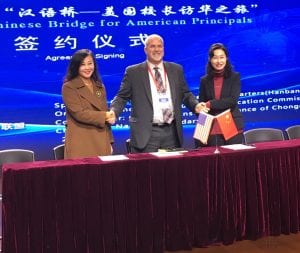 a set of speeches from several of us from the USA and China.
a set of speeches from several of us from the USA and China.
I applied for this leadership opportunity because a few months ago, with the American Association of School Administrators, the AASA, we hosted a delegation of principals from China in North Shore School District 112 and Leyden High School District 212 and we began to form professional relationships with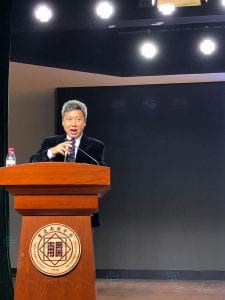 members of the Chinese delegation. In addition, one of my charges, or aims, as the superintendent of schools, is to share an inspired vision for the district beyond current realities.
members of the Chinese delegation. In addition, one of my charges, or aims, as the superintendent of schools, is to share an inspired vision for the district beyond current realities.
The current realities of our school district are untapped potential for excellence through paralyzing “in fighting” and aversion to change and progress. Therefore, it’s highly energizing for me to see the future reality in the current opportunities. One of the many realities involves a world class education system emerging from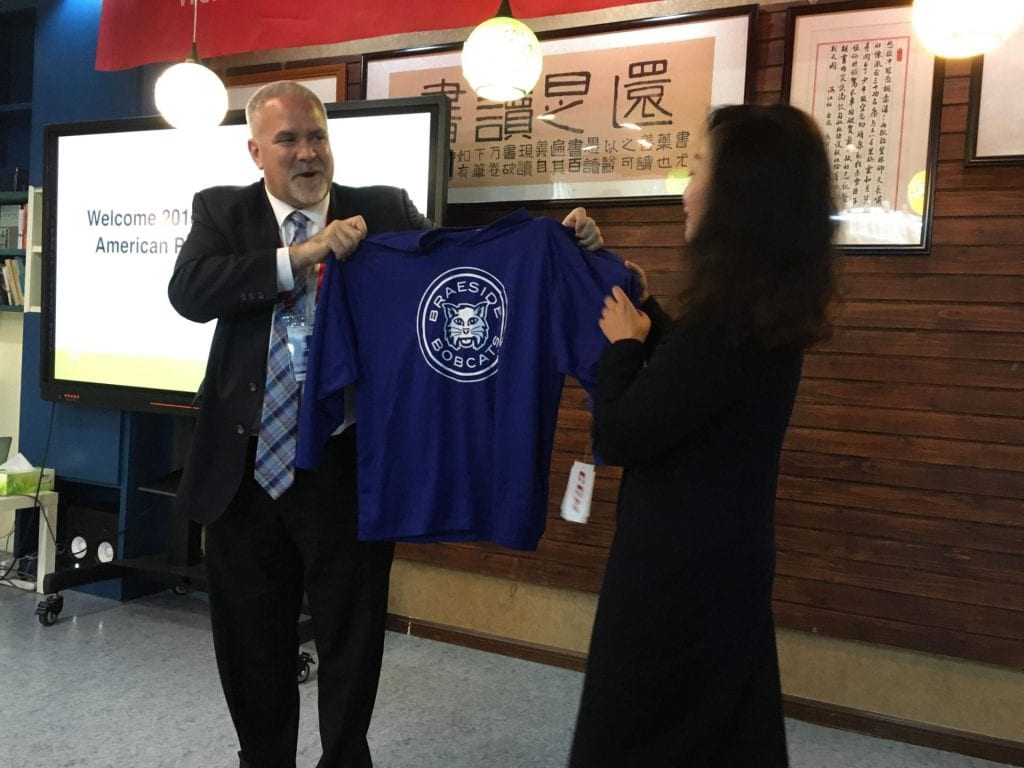 the current one with enhanced language and culture offerings beyond and in addition to the current English and Spanish offerings. By expanding the current language and cultural offerings, we’ll take our school district to higher and more appealing heights. As the chief learner (so to speak) it’s my job to model the way by seeking additional challenges and experiences on behalf of students and staff. By joining the delegation, I became a global ambassador from my community in and with my Chinese counterparts.
the current one with enhanced language and culture offerings beyond and in addition to the current English and Spanish offerings. By expanding the current language and cultural offerings, we’ll take our school district to higher and more appealing heights. As the chief learner (so to speak) it’s my job to model the way by seeking additional challenges and experiences on behalf of students and staff. By joining the delegation, I became a global ambassador from my community in and with my Chinese counterparts.
My delegation group of 25 went from Beijing to Chongqing; Chongqing is a special economic and government area, like a county or municipal zone, that reports directly to the central government (like Shanghai, and a few other large and significant areas in China). Chongqing has a population around thirty million people; China, as you may know, has a population of more than 1.4 BILLION people. To say that the scale of buildings, roads, and the country as a whole is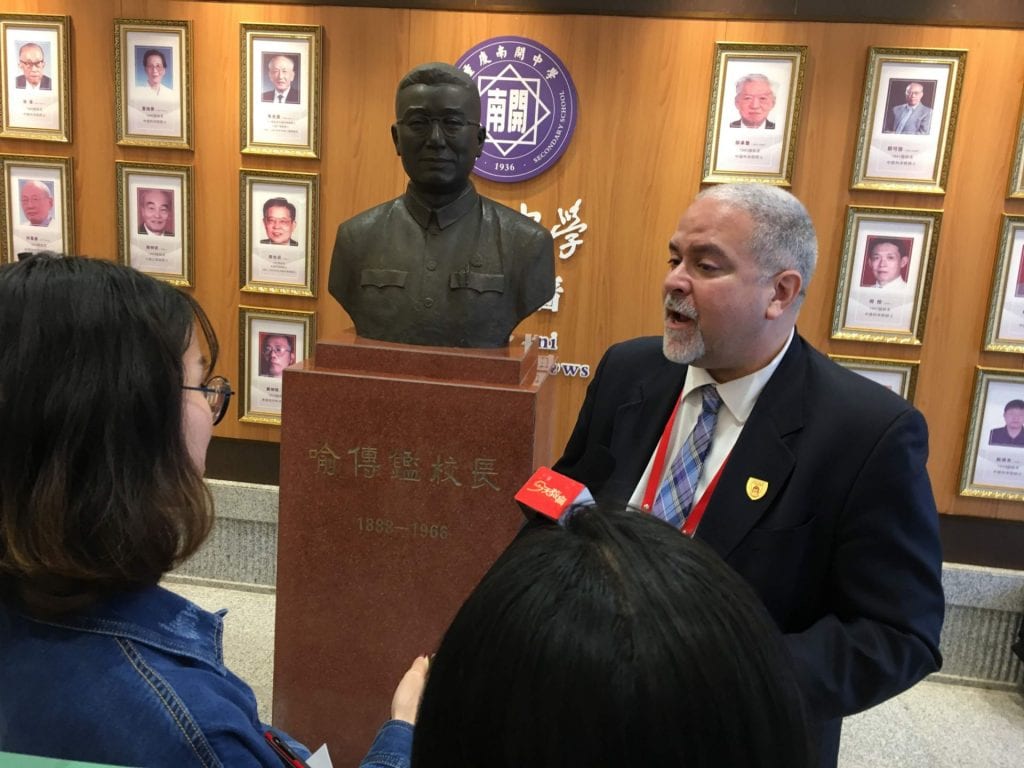 impressive is an understatement. The campuses of the K-12 schools we visited were like US community college campuses or even university campuses in terms of physical size and scope. In my delegation, we had representation from Utah, Illinois, Florida, Texas, California, Ohio, New York, and Nevada.
impressive is an understatement. The campuses of the K-12 schools we visited were like US community college campuses or even university campuses in terms of physical size and scope. In my delegation, we had representation from Utah, Illinois, Florida, Texas, California, Ohio, New York, and Nevada.
Our individual experiences and sharing helped enrich the dialogue among us as well as with our Chinese hosts. Some in the delegation, like those in Utah, have more than a decade of deep Chinese language and culture programming K-12. Others, like me, were on their first journey into the People’s Republic of China and into the possibility of adding Chinese language and culture to our local school districts and school communities.
the delegation, like those in Utah, have more than a decade of deep Chinese language and culture programming K-12. Others, like me, were on their first journey into the People’s Republic of China and into the possibility of adding Chinese language and culture to our local school districts and school communities.
In the US, it’s typical to have a K-12 classroom with 25 students (18-30); in China,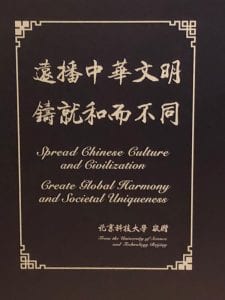 it is far more common to have class sizes of 40-60. The Chinese and American political systems, histories, cultural norms, and lifestyles have many differences yet both cultures place high value and importance on education and child development (in parts of the US, the value has ebbed and flowed and perhaps my declarative should be more aspirational). But both nations invest in educational growth and progress. The system of education in China is centralized while the system of education in the US is decentralized.
it is far more common to have class sizes of 40-60. The Chinese and American political systems, histories, cultural norms, and lifestyles have many differences yet both cultures place high value and importance on education and child development (in parts of the US, the value has ebbed and flowed and perhaps my declarative should be more aspirational). But both nations invest in educational growth and progress. The system of education in China is centralized while the system of education in the US is decentralized.
The education system in China is following a group/national set of expectations while in our country, the education system is highly individualized and locally controlled. This adds to the fascination for a visit of this scope. I’ve visited other centralized educational systems in the Americas and in Europe; like with everything, there are pros and cons, opportunities and limitations in both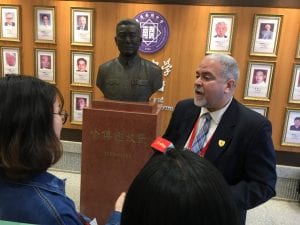 systems. The key for delegation visits like this is not to compare and contrast, but instead, to integrate and learn. Like Confucius said: “A journey of 1000 miles begins with a single step”, the goal of this delegation visit is for many miles (figuratively and literally) and this first visit of mine represents the first steps toward the journey and the collaboration between our new Chinese friends and the district I represent.
systems. The key for delegation visits like this is not to compare and contrast, but instead, to integrate and learn. Like Confucius said: “A journey of 1000 miles begins with a single step”, the goal of this delegation visit is for many miles (figuratively and literally) and this first visit of mine represents the first steps toward the journey and the collaboration between our new Chinese friends and the district I represent.
At the end of the day, and to start, as a result of my journey, whether we start to have one classroom teacher engage with one of the Chinese teachers with whom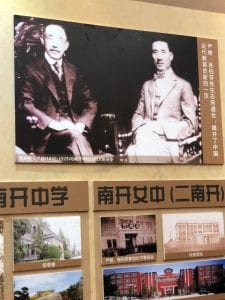 I met, or whether we create and offer sustained and long term Mandarin language programming, the trip and this formal visit will positively impact my personal leadership and the improvement of my school district. After visiting multiple schools, classrooms, formal settings, and cultural and historic sites, I can clearly see a long-term, sustainable educational partnership emerge between the North Shore School District 112 and schools I visited in Chongqing, China. The beauty
I met, or whether we create and offer sustained and long term Mandarin language programming, the trip and this formal visit will positively impact my personal leadership and the improvement of my school district. After visiting multiple schools, classrooms, formal settings, and cultural and historic sites, I can clearly see a long-term, sustainable educational partnership emerge between the North Shore School District 112 and schools I visited in Chongqing, China. The beauty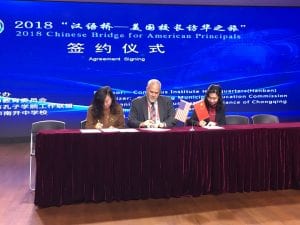 of Chongqing was impressive; mountains, rivers, bridges, high rises, lights, food (“hot pot”), historic locales, and so much more, enhanced our education focused mission.
of Chongqing was impressive; mountains, rivers, bridges, high rises, lights, food (“hot pot”), historic locales, and so much more, enhanced our education focused mission.
As our Board of Education gets ready to make a historic vote to approve the Long Range Plan Phase I recommendation on November 27, I’ll share more insights into this experience and the overall vision of growth, improvement, change, and leadership for my administration in the District.
into this experience and the overall vision of growth, improvement, change, and leadership for my administration in the District.
We’ll be sure to share updates on the Long Range Plan webpage, district communications (email, Facebook, Twitter, etc.) as well as at our live-streamed video and archived video system.
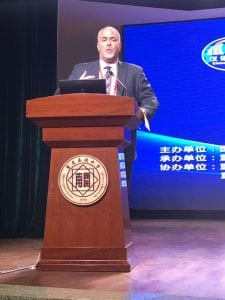
Sharing excerpts from a Board Presentation I made on Nov. 27 highlighting elements of the Journey to China! See video on slide 4:

HARMONY
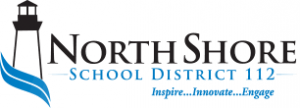
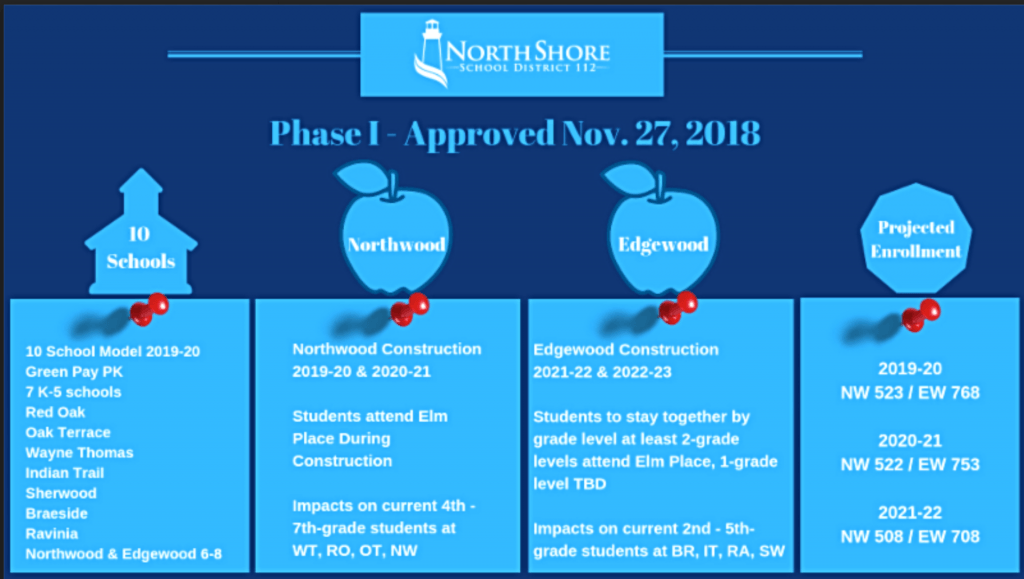
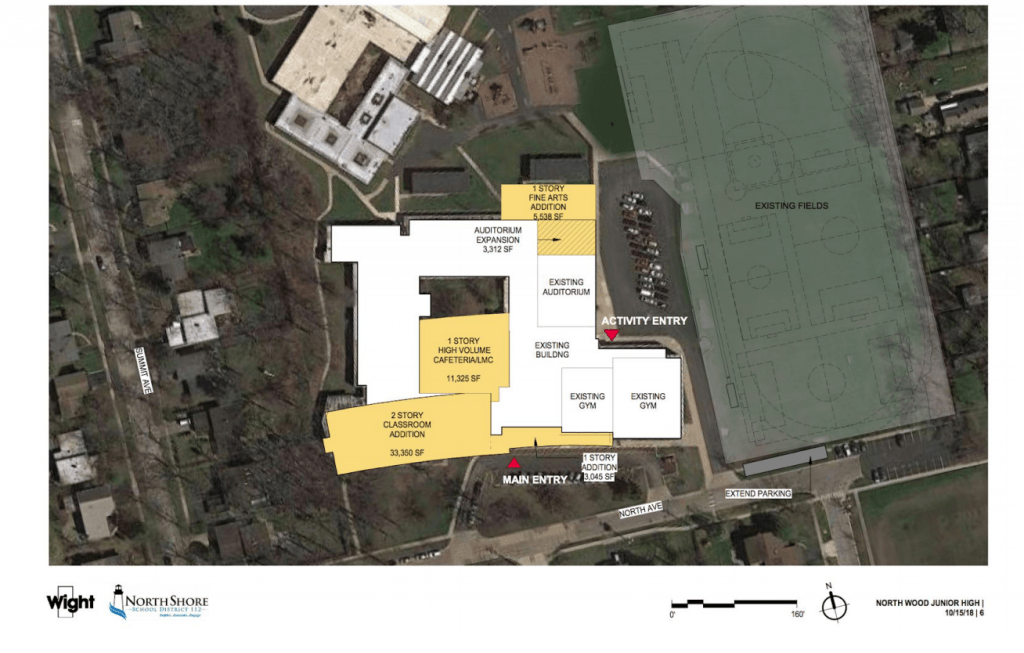
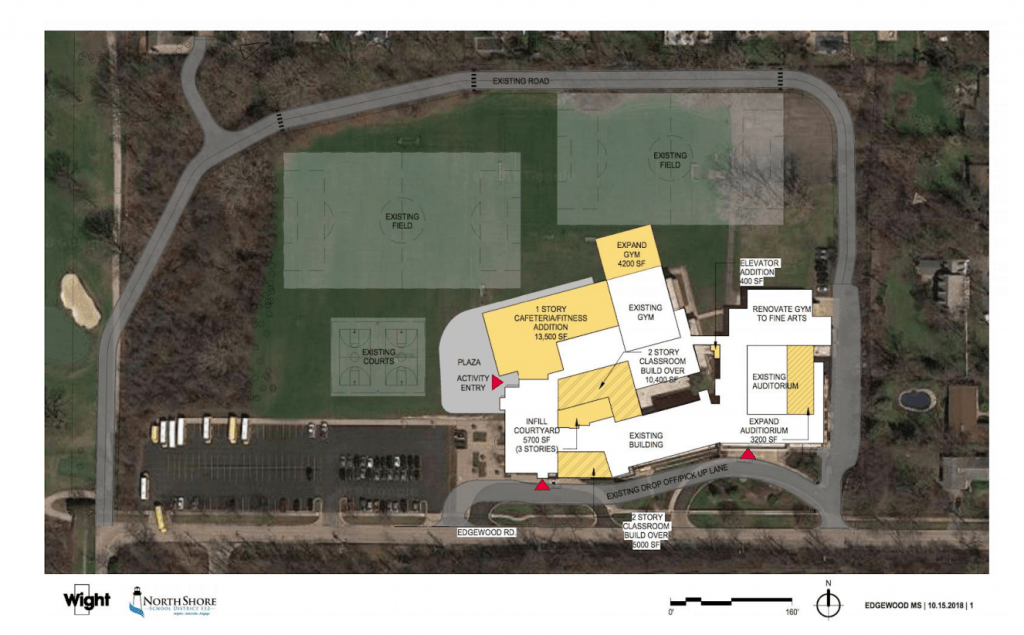
 represent my school district with the hope of bringing Mandarin language and Chinese culture into the North Shore School District 112 curriculum & instructional programming.
represent my school district with the hope of bringing Mandarin language and Chinese culture into the North Shore School District 112 curriculum & instructional programming.
 flew around the world in about 14 hours. I was traveling with a group from the College Board. There were educational leaders, board members, teachers, and others in the groups traveling on this K12China Bridge Delegation. In conjunction with the
flew around the world in about 14 hours. I was traveling with a group from the College Board. There were educational leaders, board members, teachers, and others in the groups traveling on this K12China Bridge Delegation. In conjunction with the  Teachers are highly honored professionals in the nation and in the culture overall. The schools I visited took such great pride in their founders, former principals, and teachers, made an impact on how we present our schools in the US. For example, it was normal and typical to have extensive physical space allocated for teacher offices and collaboration, school history museum areas, and student art galleries.
Teachers are highly honored professionals in the nation and in the culture overall. The schools I visited took such great pride in their founders, former principals, and teachers, made an impact on how we present our schools in the US. For example, it was normal and typical to have extensive physical space allocated for teacher offices and collaboration, school history museum areas, and student art galleries. early in the morning to late in the night every day we were on the delegation. We visited elementary schools, high schools, and we also spent a full day of observations, interactions
early in the morning to late in the night every day we were on the delegation. We visited elementary schools, high schools, and we also spent a full day of observations, interactions tourists. We were traveling to China to meet with and form and sustain people to people relationships on behalf of a larger global purpose beyond our individual and local objectives.
tourists. We were traveling to China to meet with and form and sustain people to people relationships on behalf of a larger global purpose beyond our individual and local objectives.
 world, multi-lingual (beyond 3 languages). As Americans, we sometimes fall into a complacent state since “everyone learns English” — but language is far more than the ability to get from point a to point b. Language is the windows into one’s culture — it’s a personal connector; through partnerships and learning we can join various cultures together.
world, multi-lingual (beyond 3 languages). As Americans, we sometimes fall into a complacent state since “everyone learns English” — but language is far more than the ability to get from point a to point b. Language is the windows into one’s culture — it’s a personal connector; through partnerships and learning we can join various cultures together. amazing, life-changing set of adventures. International travel is challenging in and of itself with time, distance and time changes, it’s also a challenge when you are entering a culture different from your own with unknown opportunities and plans and food, etc.
amazing, life-changing set of adventures. International travel is challenging in and of itself with time, distance and time changes, it’s also a challenge when you are entering a culture different from your own with unknown opportunities and plans and food, etc. a set of speeches from several of us from the USA and China.
a set of speeches from several of us from the USA and China. members of the Chinese delegation. In addition, one of my charges, or aims, as the superintendent of schools, is to share an inspired vision for the district beyond current realities.
members of the Chinese delegation. In addition, one of my charges, or aims, as the superintendent of schools, is to share an inspired vision for the district beyond current realities. the current one with enhanced language and culture offerings beyond and in addition to the current English and Spanish offerings. By expanding the current language and cultural offerings, we’ll take our school district to higher and more appealing heights. As the chief learner (so to speak) it’s my job to model the way by seeking additional challenges and experiences on behalf of students and staff. By joining the delegation, I became a global ambassador from my community in and with my Chinese counterparts.
the current one with enhanced language and culture offerings beyond and in addition to the current English and Spanish offerings. By expanding the current language and cultural offerings, we’ll take our school district to higher and more appealing heights. As the chief learner (so to speak) it’s my job to model the way by seeking additional challenges and experiences on behalf of students and staff. By joining the delegation, I became a global ambassador from my community in and with my Chinese counterparts. impressive is an understatement. The campuses of the K-12 schools we visited were like US community college campuses or even university campuses in terms of physical size and scope. In my delegation, we had representation from Utah, Illinois, Florida, Texas, California, Ohio, New York, and Nevada.
impressive is an understatement. The campuses of the K-12 schools we visited were like US community college campuses or even university campuses in terms of physical size and scope. In my delegation, we had representation from Utah, Illinois, Florida, Texas, California, Ohio, New York, and Nevada. the delegation, like those in Utah, have more than a decade of deep Chinese language and culture programming K-12. Others, like me, were on their first journey into the People’s Republic of China and into the possibility of adding Chinese language and culture to our local school districts and school communities.
the delegation, like those in Utah, have more than a decade of deep Chinese language and culture programming K-12. Others, like me, were on their first journey into the People’s Republic of China and into the possibility of adding Chinese language and culture to our local school districts and school communities. it is far more common to have class sizes of 40-60. The Chinese and American political systems, histories, cultural norms, and lifestyles have many differences yet both cultures place high value and importance on education and child development (in parts of the US, the value has ebbed and flowed and perhaps my declarative should be more aspirational). But both nations invest in educational growth and progress. The system of education in China is centralized while the system of education in the US is decentralized.
it is far more common to have class sizes of 40-60. The Chinese and American political systems, histories, cultural norms, and lifestyles have many differences yet both cultures place high value and importance on education and child development (in parts of the US, the value has ebbed and flowed and perhaps my declarative should be more aspirational). But both nations invest in educational growth and progress. The system of education in China is centralized while the system of education in the US is decentralized. systems. The key for delegation visits like this is not to compare and contrast, but instead, to integrate and learn. Like Confucius said: “A journey of 1000 miles begins with a single step”, the goal of this delegation visit is for many miles (figuratively and literally) and this first visit of mine represents the first steps toward the journey and the collaboration between our new Chinese friends and the district I represent.
systems. The key for delegation visits like this is not to compare and contrast, but instead, to integrate and learn. Like Confucius said: “A journey of 1000 miles begins with a single step”, the goal of this delegation visit is for many miles (figuratively and literally) and this first visit of mine represents the first steps toward the journey and the collaboration between our new Chinese friends and the district I represent. I met, or whether we create and offer sustained and long term Mandarin language programming, the trip and this formal visit will positively impact my personal leadership and the improvement of my school district. After visiting multiple schools, classrooms, formal settings, and cultural and historic sites, I can clearly see a long-term, sustainable educational partnership emerge between the North Shore School District 112 and schools I visited in Chongqing, China. The beauty
I met, or whether we create and offer sustained and long term Mandarin language programming, the trip and this formal visit will positively impact my personal leadership and the improvement of my school district. After visiting multiple schools, classrooms, formal settings, and cultural and historic sites, I can clearly see a long-term, sustainable educational partnership emerge between the North Shore School District 112 and schools I visited in Chongqing, China. The beauty of Chongqing was impressive; mountains, rivers, bridges, high rises, lights, food (“hot pot”), historic locales, and so much more, enhanced our education focused mission.
of Chongqing was impressive; mountains, rivers, bridges, high rises, lights, food (“hot pot”), historic locales, and so much more, enhanced our education focused mission. into this experience and the overall vision of growth, improvement, change, and leadership for my administration in the District.
into this experience and the overall vision of growth, improvement, change, and leadership for my administration in the District.



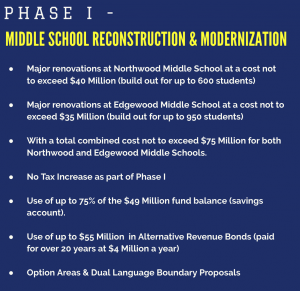 the complete and total upgrade and modernization of both middle schools in the district.
the complete and total upgrade and modernization of both middle schools in the district.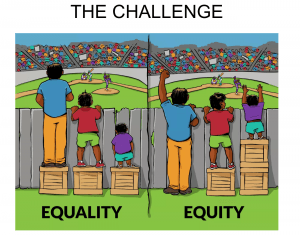 change that will move the district and the communities it serves forward. Below I share excerpts from a local newspaper article highlighting my incoming messaging and vision about leading for equity:
change that will move the district and the communities it serves forward. Below I share excerpts from a local newspaper article highlighting my incoming messaging and vision about leading for equity:
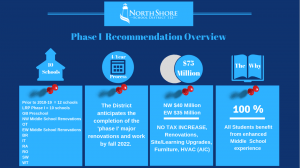 Regular
Regular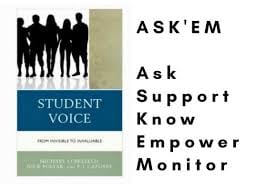 the conclusion of our book and highlights the special end of chapter feature we created: ASK’EM. It’s an acronym for what we suggest throughout the book about how leaders can incorporate student voice … just “ask’em”. The letters represent Ask, Support, Know, Empower, & Monitor, and throughout the book we share examples, suggestions, calls to action, etc. that leaders (and readers) can implement to incorporate student voice in their schools, organizations, communities, and settings! At the end of our book we have a special offer from human capital management firm
the conclusion of our book and highlights the special end of chapter feature we created: ASK’EM. It’s an acronym for what we suggest throughout the book about how leaders can incorporate student voice … just “ask’em”. The letters represent Ask, Support, Know, Empower, & Monitor, and throughout the book we share examples, suggestions, calls to action, etc. that leaders (and readers) can implement to incorporate student voice in their schools, organizations, communities, and settings! At the end of our book we have a special offer from human capital management firm 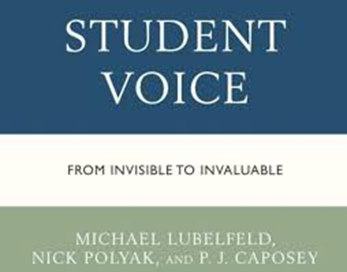
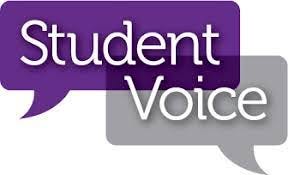
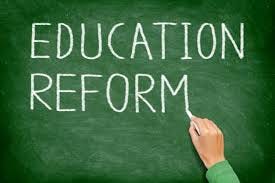









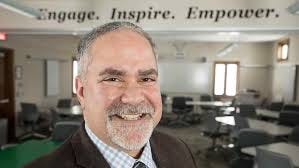
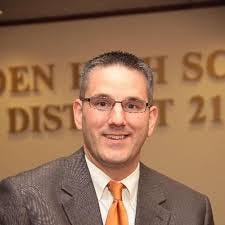

 The quote from Theodore Roosevelt captures the spirit of the opportunities we have in North Shore School District 112 at this time! We have the opportunity to do what we can (make changes to improve educational outcomes, facilities, and equity one step at a time), with what we have (accumulated fund balance savings as well as a limited bond issue paid for out of operation funds) where we are (in 2018 with 10 schools in operation for 3852 students grades PK-8).
The quote from Theodore Roosevelt captures the spirit of the opportunities we have in North Shore School District 112 at this time! We have the opportunity to do what we can (make changes to improve educational outcomes, facilities, and equity one step at a time), with what we have (accumulated fund balance savings as well as a limited bond issue paid for out of operation funds) where we are (in 2018 with 10 schools in operation for 3852 students grades PK-8).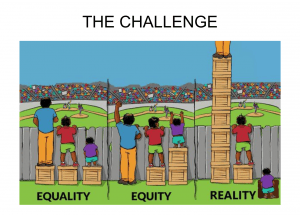
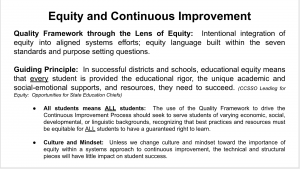

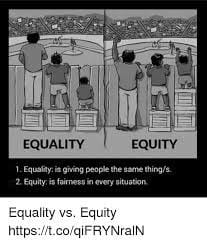
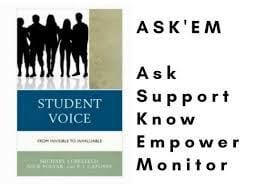 shapes, sizes, etc. The objective is for personal hygiene in this example, basically use deodorant as part of our cultural norm to present a pleasant aroma. The objective is for the grocery store to meet the various, individualized, personalized and differentiated deodorant tastes and preferences and interests and uses for the individual shopper. So if a man (in this example) wants to present the aroma of sandlewood ice or fresh sport lime, he has the ability to meet the objective of presenting a pleasant aroma, and he gets to use his unique interests, skills, abilities, etc. An equal deodorant shopping experience would have one brand with one size and one aroma — yes, everyone meets the objective of presenting with a pleasant aroma — but an equitable deodorant shopping experience is tailored to the individual’s interests, desires, preferences, background, etc. In order for us to provide educational opportunities that celebrate and enhance the unique and valuable differences our students bring forth every day we need to make multiple changes and significant improvements all across the district. I have faith in our teachers, staff, administrators, board, parents and community.
shapes, sizes, etc. The objective is for personal hygiene in this example, basically use deodorant as part of our cultural norm to present a pleasant aroma. The objective is for the grocery store to meet the various, individualized, personalized and differentiated deodorant tastes and preferences and interests and uses for the individual shopper. So if a man (in this example) wants to present the aroma of sandlewood ice or fresh sport lime, he has the ability to meet the objective of presenting a pleasant aroma, and he gets to use his unique interests, skills, abilities, etc. An equal deodorant shopping experience would have one brand with one size and one aroma — yes, everyone meets the objective of presenting with a pleasant aroma — but an equitable deodorant shopping experience is tailored to the individual’s interests, desires, preferences, background, etc. In order for us to provide educational opportunities that celebrate and enhance the unique and valuable differences our students bring forth every day we need to make multiple changes and significant improvements all across the district. I have faith in our teachers, staff, administrators, board, parents and community. Our journey continues and I am convinced that our complex work will lead to positive powerful results for our students, staff, and community!
Our journey continues and I am convinced that our complex work will lead to positive powerful results for our students, staff, and community!






